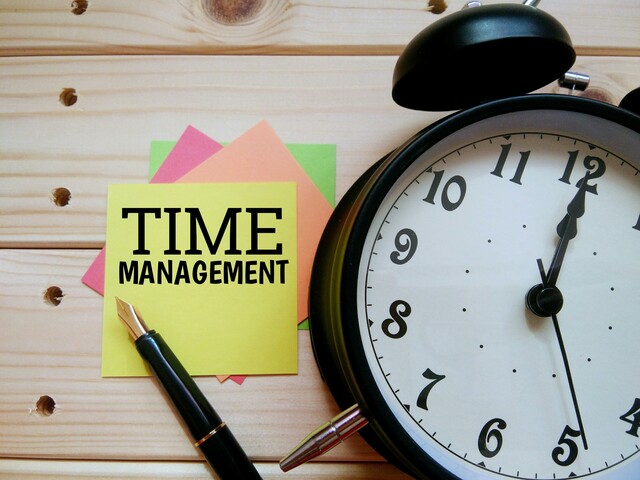Without proper training in supervision, new supervisors and managers can fall prey to poor or counterproductive habits. Common complaints about supervisors include:
A. Too authoritative ("Ruled with an iron fist")
B. Regular criticism of employee(s)
C. Didn't support employee(s)
D. Displayed know-it-all attitude
E. Lack of empathy for personal matters
F. Never listened to suggestions or tried anything new
G. Lacked goals or direction
H. Never provided thanks or recognition
Similarly, supervisors are often given too many employees to oversee. Some large restaurants can have 300 or more employees, while the optimum number for each manager to supervise is seven to 10. This can unfortunately lead to employee complaints of, "They're never around when you need them." In such cases, a limited management staff ought to organize the workforce into teams, and delegate supervision to the team member with the most skill or seniority. One restaurant refers to these members as "shift leads," gives them some additional authority, and pays them at a slightly higher rate.
In the early 20th century, an influential management consultant named Frederick Thomas suggested that workers were like parts to a mass-production line. If everything was in its place -- both people and machines -- and functioning well, jobs could be controlled and produced efficiently. The best personnel managers concentrated on ensuring their employees were in place (on time, working) and functioning well (safe, productive, focused on results). Other management theories became popular: Theory X held that employees don't like work and need to be controlled closely to perform. Theory Y held that employees do like work; get them involved and they'll succeed. More recent studies suggest that managers and supervisors use both direction and participation to get results.
Sales and performance goals will be handed down to managers from the owners or CEOs; self-managed restaurants must create their own, even if they're as basic as "meet overhead and make a profit." In order to work, goals must be SMART. This means:
S: Specific
M: Measurable
A: Attainable
R: Relevant
T: Time-bound
Rewards of a tangible sort -- framed certificates of merit, cash or gift certificates, free meals, t-shirts or caps, movie tickets -- may have a slight cost, but they are appreciated more than recognition, and inspire other employees to greater effort, as well.
1. Create a supportive atmosphere. ("Jimmy, you're doing great in most areas, but something's come up that's concerned me…")
2. Identify the problem. ("I need to talk to you about clocking out improperly. It's causing a problem because…")
3. Ask for the employee's point of view. ("Can you explain why this is happening?")
4. Seek the employee's ideas on how to improve, and add your own ideas. ("What will you to improve?" or "Do you need me to show you the clock-out procedure again?")
5. Optionally, put the session and any agreements in writing. ("We're in agreement on this, so I'm going to write down that we had this discussion. I'd like you to read this, and then sign it.")
6. Establish a follow-up, if necessary. ("Do me a favor and hold on to your clock-out slips for the next week. I'll check them next Saturday to make sure you're back on track.")
Employees feel less threatened when counseling sessions are kept on a verbal level. Focus on the problem itself, and be constructive instead of critical. Where possible, do not threaten the employee's self-esteem with comments like: "That was stupid," or "That's something only a lousy employee would do."
When an employee doesn't take the necessary steps to correct the problem, or purposely violates company policy, disciplinary action is warranted. It may be necessary to fire the employee, but most companies have disciplinary problems that include verbal and written procedures. Ensure you are familiar with your company's procedures. "Work for Hire" states have legislation in place in which employment can be terminated by either employer or employee at any time, for any reason, but your state may not be one of them. Disciplinary actions can have the same basic framework as a counseling session, but should include written documentation to protect the employee's rights, as well as you and your company's.
1. Again, identify the problem. ("We've received several guest complaints about slow service in your section over the last few weeks, and I understand that another manager already spoke to you about it -- is that correct?")
2. State the expectation or goal. ("During your training period, you signed that you understood and agreed to follow our standards of service, which is to greet tables within two minutes of their arrival.")
3. State the consequence. ("Since you've already been verbally counseled on this issue, we have to proceed to the next step, which is a written warning. As you know, the next step is either suspension or termination.")
4. Ask for employee comments, then summarize. ("Do you have any comments or questions? Very well. On a personal level, I've seen you do good work as well, and I'd rather not write anyone up, or fire them, but you're not leaving us a choice. Please improve your service standards immediately.")
Even if an employee has no disciplinary issues, performance reviews -- or at least one-on-one meetings -- should take place regularly between employees and management, either quarterly, biannually, or annually. Meetings should be informal, brief and face-to-face. Beyond a performance review, employees could be asked what their future goals are with the company, if they feel they're ready for a raise or promotion, any personal matters they might have that the company might provide help with, new ideas they might have for a better workplace, and any other employees they feel are worthy of recognition or promotion.
Most restaurants determine how much profit they have made by calculating the amount of food and beverages purchased, divided by the amount of food and beverages sold. This equals the food and beverages cost. This amount, plus the restaurant's labor costs, equal the restaurant's Prime Costs.
After a restaurant's Prime Costs are covered, managers must account for all of the other expenses that are necessary to pay: rent, taxes, utilities, insurance, linen costs, advertising, pest control, maintenance, cleaning, office supplies, kitchen equipment, and kitchen supplies. What's left after a restaurant's Prime Costs and other expenses, are referred to as PROFIT, or BOTTOM LINE.
The simple way to think about restaurant profits is that for every dollar a restaurant takes in, it spends 96 percent -- meaning, for every dollar a restaurant makes in sales, it keeps four cents. This is the reason restaurant managers must control food and beverage costs wherever possible.
There are costs you can cut immediately, by simply taking a hard look at what your restaurant needs and doesn't need. For example, do you really need tablecloths? Bare tables are low maintenance and easy to clean, and place mats make for easier set-up.
Have you bought and stocked certain condiments (malt vinegar or Worcestershire sauce) that barely anyone ever uses? Go through your existing stock and then only order a fraction of your normal amount.
Do certain entrées hardly ever sell, yet your staff continues using man-hours prepping them anyway? Experiment with altering the basic recipe and renaming it until it sells, or discontinue it.
In the Back of the House, heavy traffic areas should have at least 48 inches of space for workers on each side, or a minimum of 30 inches. Aisles should be wide enough for mobile carts. Your volume cooking areas should be toward the back of the kitchen, and your to-go station should be closest to the dining room. Straight-line layouts work best for assembly-line style prep and cooking, where more than one person is working; otherwise self-contained triangle or diamond work layouts will give individual cooks quicker access to prep tables, sinks, and cooking equipment.
1) Properly storing food items using the FIFO ("First In, First Out") method, and observing proper food handling and cooking procedures.
2) Ensuring checks are read properly, and all meals are cooked to the proper specifications, especially paying attention to orders by allergic guests.
3) Working as an efficient team to ensure covers are sent out expeditiously.
4) Ensuring expediters focus on each individual cover's quality, and that they arrive at the right tables.
5) Eliminating pot and pan cleanup with Pansaver, a high-temperature commercial pan liner that also stores leftovers.
6) Use pre-prepared products (already prepped and portion-controlled) wherever possible.
7) Refrain from pilferage.
1) Cutting down on linen costs by mopping up spills with rags instead of paper products.
2) Repeating orders back to guests, and accurately and timely communicating their orders to the Back of the House.
3) Ensuring soft drink glasses are filled with ice to reduce soda costs.
4) Serving the proper amount of condiments, cream, bread, and butter.
5) Using wrapped napkin/silverware rings ahead of time; you'll save storage handling and rewashing.
6) Avoiding careless disposal of silverware and dishes (one restaurant revealed that approximately $100.00 worth of silverware was lost each day, by wait and bus staffers indiscriminately disposing of them with trash). A magnetic covering above waste containers helped reduce the shrinkage, but some branches of the company eventually dumped their trash into a children's wading pool and gave disciplined employees a choice between traditional 'write-ups' or raking out the lost silverware.
7) Avoiding breakage of dishes and glassware by using proper handling techniques.
8) Refraining from pilferage.
"Pilferage" can occur in both the Front and Back of the House, and is what retail businesses refer to as "Internal Shrinkage" -- another word for theft. This includes employees taking home food, beverages, silverware, plate ware, condiments, or anything else. A standing policy of no "to-go" food for employees can reduce pilferage.
In a restaurant situation, employees should be encouraged to eat before or after their shifts (or during established breaks, if they're allowed). One large chain restaurant takes this out of the equation by ensuring that each server samples that day's special, so they can more accurately describe it to their guests.
Working in an environment surrounded by hot, fresh foods is an enormous temptation to employees, many of whom can end up rationalizing, "I work there, why shouldn't I have something to eat?" It sounds plausible, but a bank teller could theoretically use the same rationale: "I work there, why shouldn't I have some of the money?"
A "Hands off/No Free Food Ever" policy could be justified, but also comes across as arrogant and tyrannical (and hypocritical, if chefs are witnessed continually sampling items for quality control). It is also nearly impossible to enforce. A discounted employee menu in which employees eat at cost is a good compromise, as is a meals-for-rewards program, or a limited number of documented free meals per week or month.
Investing in labor-saving technologies might seem like a financial hemorrhage at first, but spending $10,000 on equipment can pay for itself within a year. Equipment covered by IRS code 179 is 100 percent deductible in its acquisition year, and can save you additional thousands over time. Some suggestions include:
1) Communications devices. Wireless headsets can save millions of steps for employees by allowing instant communication from the Front to the Back of the House. Silent pagers can let guests know their table is ready, or can quietly and instantly summon the appropriate server when used at table side.
2) Computerized reservation and data systems. These can streamline the reservation process, track guest data and demographics, and enable guests to make reservations from both the telephone and the Internet.
3) Purchasing and inventory control can be computerized with software \
4) Automatic compacting trash receptacles an reduce trash containment labor by one to two hours per day.
5) The Power Soak System® claims pot and pan cleaning labor savings of 65 percent.
6) Conveyor cooking from Blodgett's Magi grill enables one person to cook 250 burgers or 200 pieces of fresh chicken per hour.
7) Kolpak's Polar-Chill system blast-chills products from 140 degrees to 40 degrees in two hours.
8) Use portion-control devices for everything you can, especially for the bar area.























